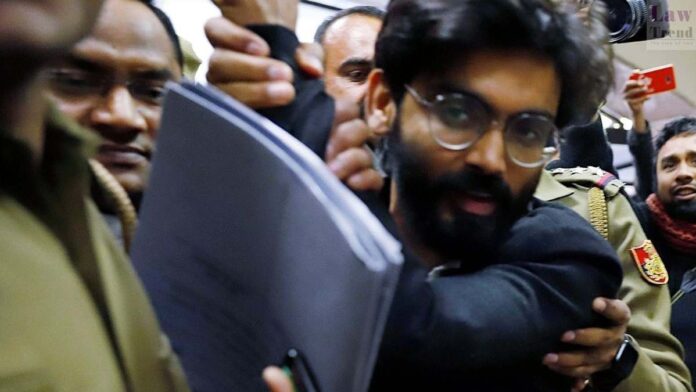In a significant hearing at the Delhi High Court, the Delhi Police contended that speeches made by Umar Khalid, Sharjeel Imam, and others incited fear and contributed to the violence in northeast Delhi in February 2020. The police made these arguments while opposing the bail pleas of the accused before Justices Navin Chawla and Shalinder Kaur, citing the speeches’ references to contentious issues such as CAA-NRC, the Babri mosque, triple talaq, and Kashmir.
Special Public Prosecutor Amit Prasad highlighted a pattern in the speeches delivered by Meeran Haider, Sharjeel Imam, Khalid Saifi, and Umar Khalid, stating that they uniformly projected a narrative that stirred fear among the public. “These speeches were not only similar in content but were deliberately designed to instigate unrest,” Prasad argued.
Further detailing Khalid’s activities, Prasad accused him of giving an “objectionable speech” in Amravati, which he claimed was strategically made viral to incite disturbances at a critical time. He also suggested that Khalid’s travel outside Delhi during the riots was a calculated attempt to avoid direct implication in the violence.
The unrest, which coincided with protests against the Citizenship Amendment Act (CAA) and National Register of Citizens (NRC), resulted in the deaths of 53 people and injuries to over 700. Khalid, Imam, and several others have been booked under the stringent Unlawful Activities (Prevention) Act (UAPA) and various IPC provisions, labeled as “masterminds” behind the orchestrated violence.
In the ongoing legal proceedings, Khalid and his co-accused have challenged the trial court’s denial of bail, arguing their prolonged incarceration and highlighting the release on bail of other co-accused. However, Prasad referenced statements from several protected witnesses and alleged planning via WhatsApp groups that pointed to a premeditated strategy to incite riots, involving coordination for stone pelting and managing protest sites, particularly by students from Jamia Millia Islamia.
Prasad emphasized the orchestrated nature of the actions, stating, “Each action was concerted and had a pattern. It is important to appreciate the scale of the violence and understand its classification as a ‘terrorist act’ under the law.”




